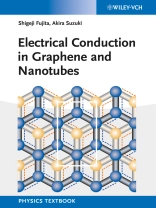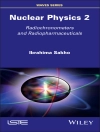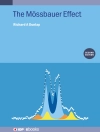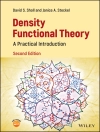Written in a self-contained manner, this textbook allows both advanced students and practicing applied physicists and engineers to learn the relevant aspects from the bottom up. All logical steps are laid out without omitting steps.
The book covers electrical transport properties in carbon based materials by dealing with statistical mechanics of carbon nanotubes and graphene – presenting many fresh and sometimes provoking views. Both second quantization and superconductivity are covered and discussed thoroughly. An extensive list of references is given in the end of each chapter, while derivations and proofs of specific equations are discussed in the appendix.
The experienced authors have studied the electrical transport in carbon nanotubes and graphene for several years, and have contributed relevantly to the understanding and further development of the field. The content is based on the material taught by one of the authors, Prof Fujita, for courses in quantum theory of solids and quantum statistical mechanics at the University at Buffalo, and some topics have also been taught by Prof. Suzuki in a course on advanced condensed matter physics at the Tokyo University of Science.
For graduate students in physics, chemistry, electrical engineering and material sciences, with a knowledge of dynamics, quantum mechanics, electromagnetism and solid-state physics at the senior undergraduate level. Includes a large numbers of exercise-type problems.
Table of Content
1. Introduction
2. Kinetic Theory and Boltzmann Equation
3. Bloch Electron Dynamics
4. Phonons and Electron-Phonon Interaction
5. Electrical Conductivity of Multi-walled Nanotubes
6. Semiconducting SWNT
7. Superconductivity
8. Metallic (or Superconducting) SWNT
9. Magnetic Susceptibility
10.Magnetic Oscillations
11. Quantum Hall Effect
12l.Quantum Hall Effect in Graphene
13. Seebeck Coefficient in Multi-walled Carbon Nanotubes
14. Miscellaneous
About the author
Shigeji Fujita was awarded his Ph.D. degree in physics from the University of Maryland at College Park in 1960. He subsequently worked as a research assistant and assistant professor at various Japanese and American universities and held visiting appointments at universities around the world. In 1968, he was appointed to a professorship at the Department of Physics of the State University of New York at Buffalo, which is where he still teaches. Professor Fujita conducts research in several areas, among others in equilibrium and non-equilibrium statistical mechanics, the Kinetic Theory of plasmas, gases, liquids and solids, and the Quantum Hall Effect. He has published over 200 articles and eleven books.
Akira Suzuki received his Ph.D. in physics from the University of Reading, UK, in 1982. He subsequently worked as a research associate at Purdue University, USA. In 1985 he joined the Canon Inc. Research Center as a chief scientist. In 1993 he was appointed as an associate professor at the Department of Physics, Tokyo University of Science and was promoted to a full professor in 1999. Professor Suzuki’s research interests include nonequilibrium statistical mechanics, applications of thermofield dynamics to open quantum systems, and condensed matter physics (transport theory for graphene and carbon nanotubes among others). He has published over 70 papers and seven books (translations and two books including a book, Foundation of Statistical Thermodynamics).












